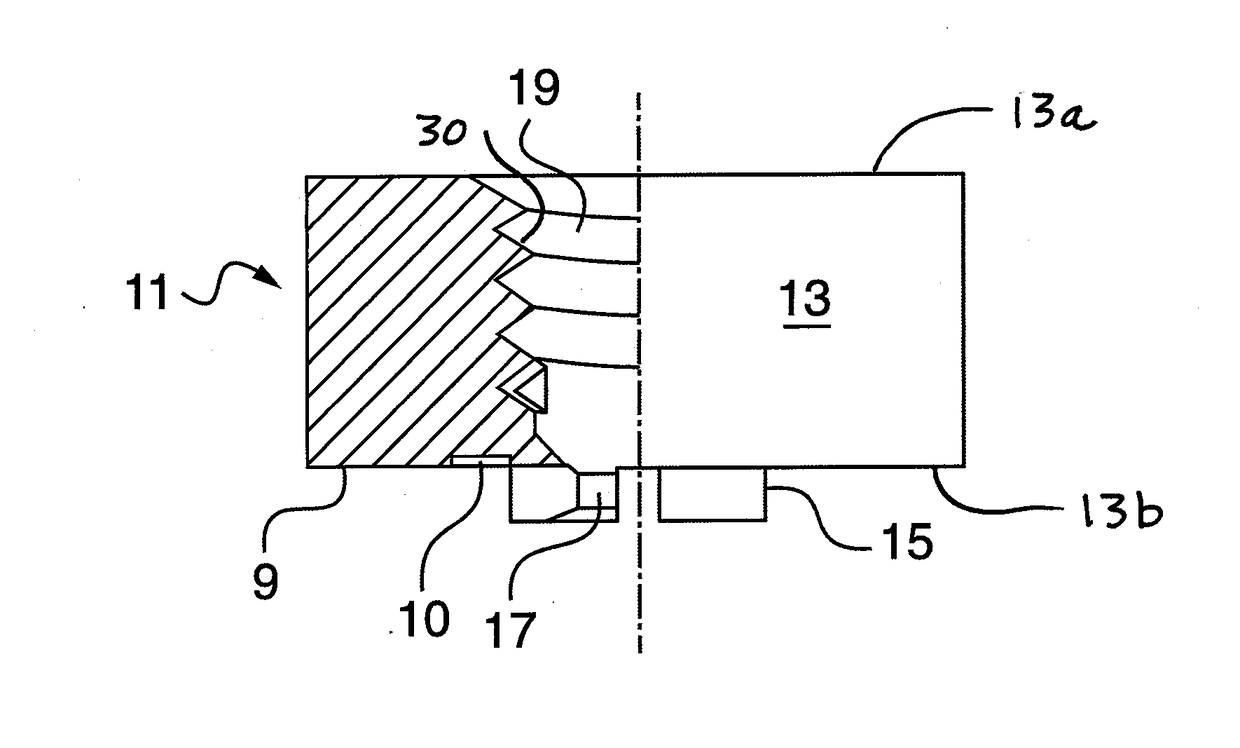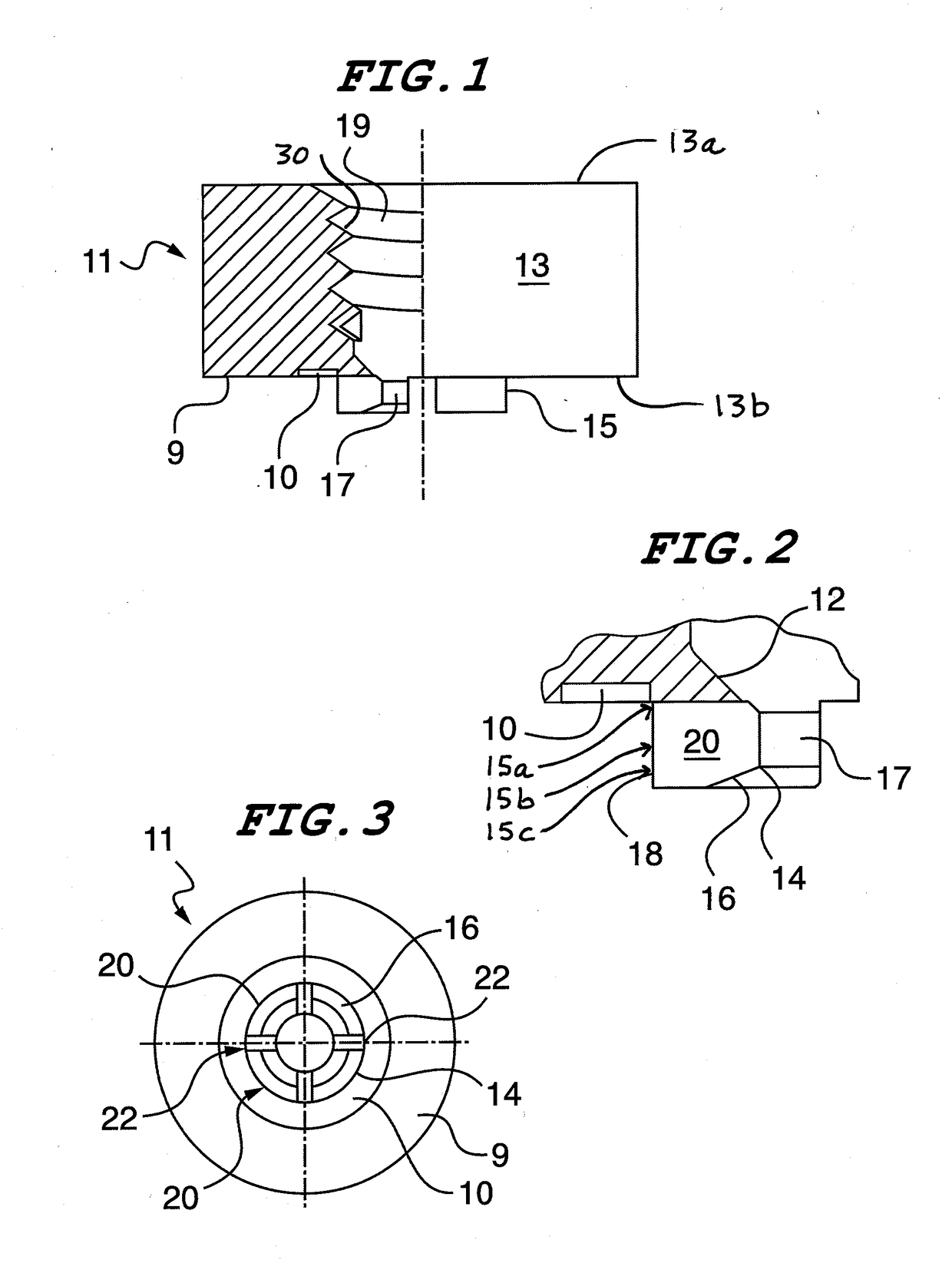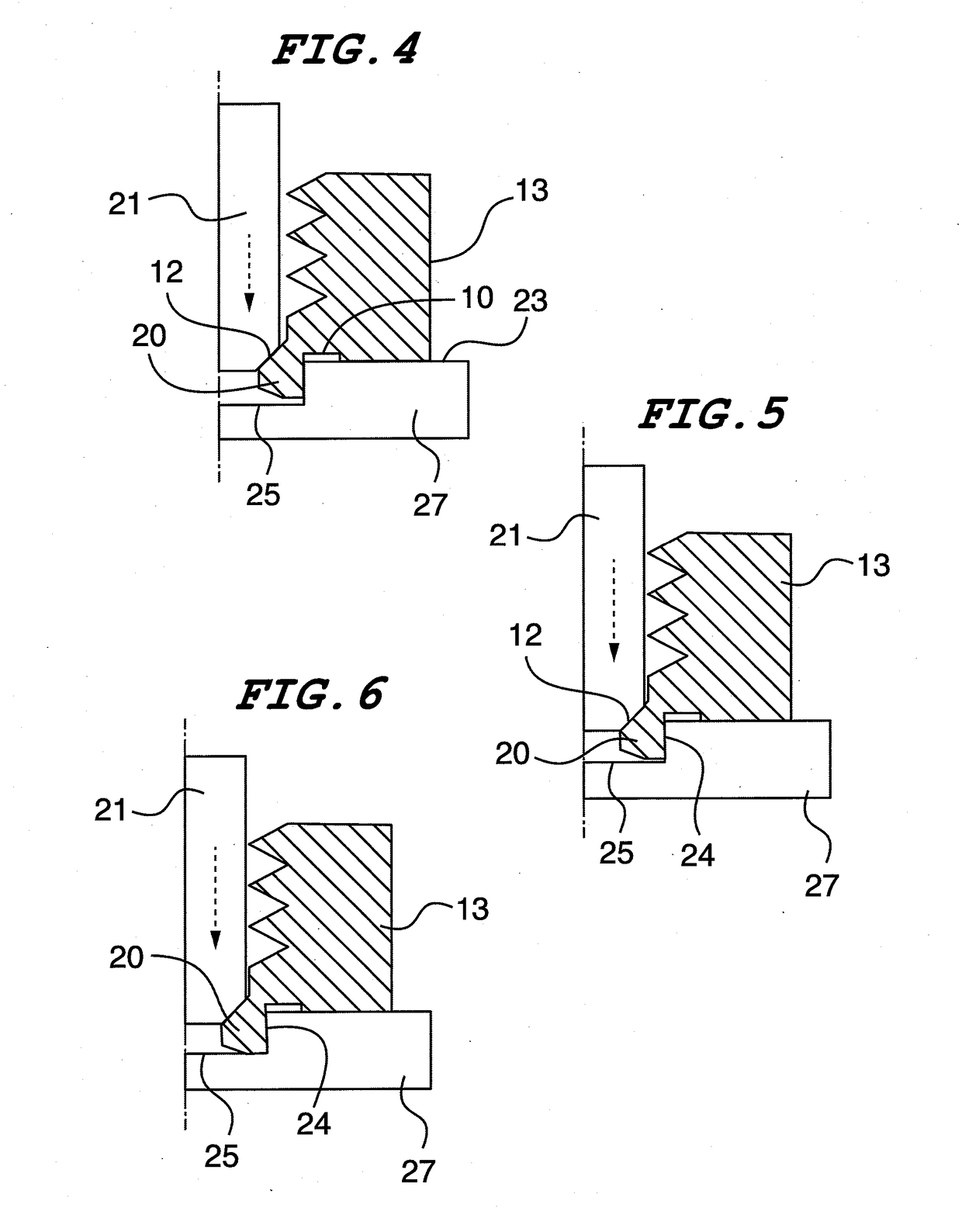Micro-Standoff for Blind Holes
a technology of micro-standoff and blind hole, which is applied in the direction of threaded fasteners, sheet joining, fastening means, etc., can solve the problems of inefficiency of prior art, inability to meet the challenges of micro-components, and difficulty in searching for extra grip areas for mechanical bonding or even totally different means of attachment, etc., to achieve the effect of reducing the compressive for
- Summary
- Abstract
- Description
- Claims
- Application Information
AI Technical Summary
Benefits of technology
Problems solved by technology
Method used
Image
Examples
Embodiment Construction
[0022]An internally-threaded standoff fastener in accordance with a preferred embodiment of the invention is shown in FIGS. 1-3 and is designated generally by reference numeral 11. Referring to FIG. 1, the fastener 11 is shown in partial section along a central axis of symmetry. The fastener 11 has a substantially-cylindrical body 13 with upper 13a and lower 13b axial ends. A central, threaded bore 19 extends axially through the body 13. The threads 30 of the bore extend from the upper end 13a to a location proximate the lower end 13b. An outer peripheral shoulder 9 is formed on the lower axial end 13b. The shoulder encircles the shank 15 as described below.
[0023]A short shank 15 extends axially from the lower end 13b of the body 13. Proceeding axially from the upper to the lower end, the shank has an upper 15a, central 15b and lower portion 15c. The shank 15 has a central internal bore 17 that is preferably co-axial with the internal, threaded bore 19 of the body 13. The central po...
PUM
 Login to View More
Login to View More Abstract
Description
Claims
Application Information
 Login to View More
Login to View More - R&D
- Intellectual Property
- Life Sciences
- Materials
- Tech Scout
- Unparalleled Data Quality
- Higher Quality Content
- 60% Fewer Hallucinations
Browse by: Latest US Patents, China's latest patents, Technical Efficacy Thesaurus, Application Domain, Technology Topic, Popular Technical Reports.
© 2025 PatSnap. All rights reserved.Legal|Privacy policy|Modern Slavery Act Transparency Statement|Sitemap|About US| Contact US: help@patsnap.com



